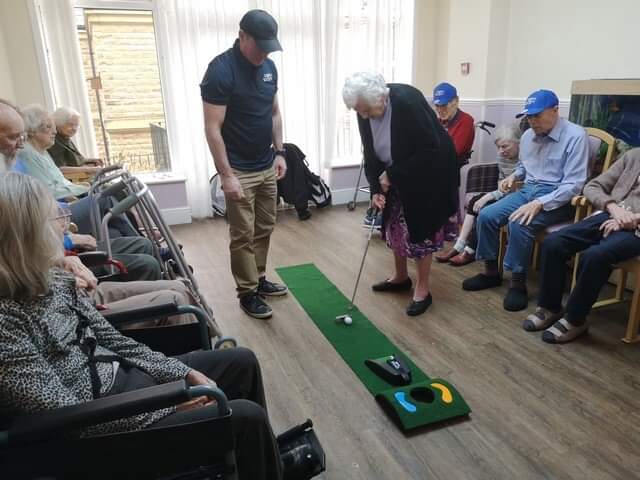
Falls are a significant concern, especially for older adults and individuals with certain medical conditions. According to the CDC, falls are the leading cause of injury-related hospitalizations among older adults. Fall detection devices can be life-saving, providing immediate alerts to caregivers or emergency responders when a fall occurs. However, to ensure these devices work effectively, proper setup and usage are crucial. This guide will walk you through the process of setting up and using a fall detection device correctly to maximize its benefits.
Understanding Fall Detection Devices
Fall detection devices are wearable or stationary gadgets designed to detect sudden falls and send alerts to designated contacts or emergency services. They typically use accelerometers, gyroscopes, and advanced algorithms to differentiate between regular movements and actual falls. Some popular fall detection devices include:
- Wearable Devices: Smartwatches, pendants, or clip-on sensors with built-in fall detection features.
- Medical Alert Systems: Home-based systems with fall detection sensors and emergency response capabilities.
- Smartphone Apps: Apps that utilize a phone’s built-in sensors to detect falls and alert contacts.
- Smart Home Devices: Sensors placed in strategic areas within a home to detect falls without requiring a wearable device.
Step-by-Step Guide to Setting Up a Fall Detection Device
1. Choose the Right Device
Before purchasing a fall detection device, consider the following factors:
- User Comfort: Wearables should be lightweight and non-intrusive.
- Battery Life: Longer battery life means fewer recharges and better reliability.
- Connectivity: Ensure the device supports Wi-Fi, Bluetooth, or cellular networks for real-time alerts.
- Accuracy: Look for devices with positive user reviews and high accuracy ratings.
- Ease of Use: Choose a device that is simple to operate, especially for elderly users.
2. Charge and Activate the Device
Most fall detection devices need to be fully charged before use. Follow these steps:
- Plug the device into a charger and allow it to reach a full charge.
- Turn the device on and follow the manufacturer’s instructions to activate it.
- Connect the device to Wi-Fi, Bluetooth, or cellular networks as required.
3. Set Up Emergency Contacts
One of the most critical steps is programming emergency contacts into the device. This usually involves:
- Entering phone numbers of caregivers, family members, or emergency responders.
- Setting up priority contact lists (primary and backup contacts).
- Testing the alert system to ensure notifications are being sent and received properly.
4. Adjust Sensitivity Settings
Many fall detection devices allow you to adjust the sensitivity level. This helps reduce false alarms while ensuring real falls are detected.
- High sensitivity may detect sudden movements like sitting down quickly as a fall.
- Low sensitivity may fail to detect slow, gradual falls.
- Test different settings to find the optimal balance for the user’s daily activity level.
5. Wear the Device Correctly
Proper placement of wearable fall detection devices ensures accurate detection:
- Pendants: Should be worn around the neck, at chest level.
- Wristbands: Should be securely fastened but comfortable.
- Clip-on Sensors: Should be attached to a sturdy part of clothing (e.g., waistband or belt).
- Smartphones: If using a phone app, ensure the phone is always carried in a pocket or wearable pouch.
6. Test the Device
Before relying on the device for fall detection, perform a few test scenarios:
- Simulate a fall in a controlled environment (e.g., onto a cushioned surface).
- Ensure the device detects the fall and sends alerts correctly.
- Confirm that emergency contacts receive notifications promptly.
7. Enable Additional Features (If Available)
Some devices offer extra features that can enhance safety and usability:
- GPS Tracking: Useful for tracking users in case they wander or get lost.
- Two-Way Communication: Allows direct communication with caregivers or emergency services.
- Activity Monitoring: Tracks daily movements and alerts caregivers if unusual inactivity is detected.
- Automatic Updates: Ensure firmware and software updates are enabled for the latest improvements and bug fixes.

Best Practices for Using a Fall Detection Device
1. Wear the Device at All Times
Falls can happen unexpectedly, so the device should be worn at all times, including:
- At home, especially in high-risk areas like bathrooms and stairs.
- Outdoors, where uneven terrain can increase fall risks.
- During sleep, if the user is prone to nighttime falls.
2. Regularly Check Battery Life
A fall detection device is useless if the battery dies. Establish a routine to:
- Charge the device daily or as required.
- Check battery levels periodically and replace batteries if necessary.
- Keep spare charging cables handy.
3. Keep Emergency Contacts Updated
Ensure the list of emergency contacts is always current:
- Remove outdated numbers.
- Add new caregivers or family members if needed.
- Inform emergency contacts about their role and what to do if they receive an alert.
4. Reduce False Alarms
Frequent false alarms can lead to caregivers ignoring alerts. To minimize them:
- Adjust sensitivity settings as needed.
- Train users on how to cancel accidental alerts.
- Inform emergency contacts about possible false alarms and how to respond.
5. Conduct Routine Tests
Regularly testing the device ensures it functions properly:
- Perform a manual fall test every few weeks.
- Verify that alerts are being sent and received.
- Contact customer support if issues arise.
Troubleshooting Common Issues
1. Device is Not Detecting Falls
- Ensure the device is worn correctly.
- Adjust sensitivity settings.
- Update firmware if an update is available.
2. False Alarms Occur Frequently
- Reduce sensitivity settings.
- Secure the device firmly to minimize unnecessary movement.
3. Emergency Contacts Not Receiving Alerts
- Check network connectivity.
- Verify that emergency contact numbers are correct.
- Reset and reconfigure the device if needed.
Conclusion
A fall detection device is a powerful tool that can provide peace of mind for users and their caregivers. However, for it to work effectively, proper setup and regular maintenance are essential. By following the steps outlined in this guide, you can ensure that your fall detection device functions reliably, providing timely alerts and potentially saving lives. Whether you’re setting it up for yourself or a loved one, taking the time to configure and use the device correctly can make all the difference in an emergency situation. For more information on choosing the best fall detection device for your needs, visit website for detailed reviews and recommendations.
Written by Amy M. Cardenas
Like Us On Facebook








